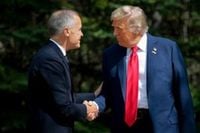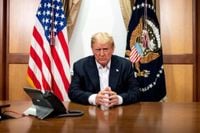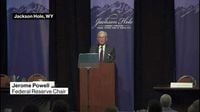Seven months into Donald Trump’s second term as U.S. president, the impact of his aggressive tariff policy is reverberating through the American economy and spilling over into cross-border relations with Canada. While the administration touts tariffs as a tool to level the playing field and boost domestic industry, the data tells a more complicated story—one of rising prices, sluggish growth, and shifting alliances. As the U.S. economy absorbs the consequences of these policies, Canada has chosen a moment of tactical retreat, dialing back most of its retaliatory tariffs on American goods in a gesture meant to ease tensions ahead of a crucial trade pact review.
When Trump returned to the White House on January 20, 2025, tariffs were not the central issue of the election, but they quickly became the defining feature of his early months in office. By early June, about four and a half months into his term, Trump announced a new round of so-called “reciprocal” tariffs—an approach that diverges from the rules-based system of the World Trade Organization. The stated goal: to ensure that U.S. imports face the same barriers abroad as foreign goods do in America. But as The Indian Express reports, the reality is far less straightforward.
At the start of 2025, U.S. tariffs averaged just 2.5%. Since then, the effective rate has soared to 18.6% based on presidential announcements, though the actual tariff rate applied to imports is closer to 9.1%, according to calculations by the Financial Times. This means that while headlines might suggest a dramatic spike, the real-world impact on importers—and by extension, consumers—is somewhat less severe, at least for now. Still, there’s no escaping the fact that tariffs have more than tripled since January, and the effects are rippling outward.
One of the most visible barometers of economic health—the stock market—offers a mixed verdict. The NASDAQ 100, dominated by tech giants like Nvidia, Microsoft, and Apple, has surged 10.65% since the start of the year. But the S&P 500, which casts a wider net across the economy, has grown at a much slower pace. The Dow Jones Industrial Average has lagged even further behind, rising at about half the NASDAQ’s rate, while the Dow Jones Transportation Average has actually declined nearly 2% year-to-date. The Russell 2000, tracking small-cap stocks, has managed only a modest 2% gain. Even the S&P 500 Consumer Discretionary index—an indicator of consumer confidence and spending—has contracted by 0.36%. In short, while a handful of tech companies are thriving, much of the broader economy is treading water or worse.
Tariffs, by design, raise prices for imported goods. But the knock-on effects don’t stop there. Domestic producers, facing less competition, often hike their own prices, and related products can become more expensive as well. Trump and his supporters argue that inflation remains under control, but the numbers tell a different story. Personal Consumption Expenditures (PCE)—the Federal Reserve’s preferred inflation measure—began rising in April, shortly after the reciprocal tariffs were announced, and by the end of June was approaching 3%, well above the Fed’s 2% target. The situation worsened in July, when the Bureau of Labor Statistics reported that wholesale inflation, as measured by the Producer Price Index, jumped 3.3%—the largest increase since February.
These inflationary pressures have tied the Federal Reserve’s hands. At the beginning of 2025, most analysts expected the central bank to cut interest rates two to four times over the course of the year. Instead, rising prices—driven in part by tariffs—have forced the Fed to stand pat, despite mounting criticism from the White House. According to the minutes from the Fed’s August 20 policy meeting, “Participants noted that tariff effects were becoming more apparent in the data, as indicated by recent increases in goods price inflation…A couple of participants suggested that tariff effects were masking the underlying trend of inflation and, setting aside the tariff effects, inflation was close to target.” The minutes also highlighted that the full impact of tariffs might take time to filter through to consumers, due to factors like stockpiled inventories and slow contract renegotiations.
The consequences for economic growth are already visible. After expanding by 2.9% in 2023 and 2.8% in 2024, U.S. GDP is forecast to slow to just 1.9% in 2025 and a meager 1.2% in 2026, according to the International Monetary Fund. The combination of rising inflation and slowing growth raises the specter of stagflation—a scenario dreaded by economists and policymakers alike.
The labor market, once a bright spot in the post-pandemic recovery, is also showing signs of strain. Earlier in August, the Bureau of Labor Statistics reported only a small increase in employment for July, alongside downward revisions for May and June. The disappointing figures prompted Trump to fire the head of the Bureau—a move that drew sharp criticism from both economists and political opponents. With growth slowing and inflation rising, a weakening job market is hardly surprising, but it adds another layer of anxiety for American workers.
Perhaps most ironically, Trump’s tariffs have undermined one of the traditional pillars of American economic strength: the U.S. dollar. Despite its status as the world’s reserve currency—90% of global foreign exchange transactions are denominated in dollars, and 60% of central bank reserves are held in dollars—the greenback has lost ground in 2025 against the euro, Japanese yen, British pound, Swiss franc, and Canadian dollar. A weaker dollar erodes Americans’ purchasing power and makes imports more expensive, compounding the inflationary effects of tariffs.
As the U.S. grapples with the fallout of its own trade policy, Canada has chosen a nuanced response. On Friday, August 22, Ottawa announced it would remove most of the 25% retaliatory tariffs it had imposed on U.S. imports, including orange juice, clothing, appliances, and motorcycles. The move, described by Reuters as a gesture of goodwill toward Trump, follows a “productive” phone call between the U.S. president and Canadian Prime Minister Mark Carney earlier in the week. However, Canada is keeping tariffs in place on metals and autos—the sectors at the heart of Trump’s protectionist agenda and the most politically sensitive industries on both sides of the border.
Carney has framed the rollback as an effort to “align” with U.S. exemptions under the United States-Mexico-Canada Agreement (USMCA), but the political motivations are clear. With the 2026 USMCA review looming, Canada is offering a modest olive branch while holding onto its most powerful bargaining chips. The move has drawn mixed reactions at home: business groups welcome relief on consumer goods, while opposition politicians accuse Carney of capitulating to Trump without securing meaningful concessions in return.
For now, both governments are spinning the moment as progress. Trump can claim that Canada blinked first, while Carney can point to lower prices for Canadian consumers. But the core disputes—over steel, aluminum, and autos—remain unresolved. As inflation continues to bite and growth slows, the true cost of tariffs is becoming harder to ignore, and the next round of trade negotiations promises to be anything but easy.
In the end, the data is clear: tariffs may bring in revenue, but they also bring pain. For American consumers, businesses, and trading partners alike, the price of protectionism is proving steep—and the story is far from over.



